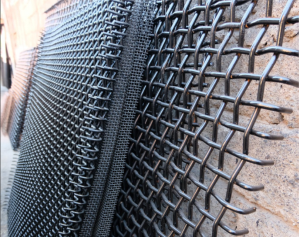Exploring Affordable Options for Garden Mesh and Their Impact on Outdoor Projects
Understanding Garden Mesh Prices A Comprehensive Guide
When it comes to gardening and landscaping, garden mesh is an essential component that serves multiple purposes. gardeners and landscapers alike utilize this versatile material for a variety of projects, including soil stabilization, plant support, and pest control. However, one of the critical factors to consider when purchasing garden mesh is its price, which can vary significantly based on several factors.
What is Garden Mesh?
Garden mesh, often made from materials like polyethylene, polypropylene, or wire, is a type of netting used in horticulture. Its primary functions include protecting plants from pests, providing structural support for climbing plants, and managing soil erosion. Garden mesh comes in various sizes, thicknesses, and mesh openings, making it adaptable to different gardening needs.
Factors Influencing Garden Mesh Prices
1. Material The type of material used in the garden mesh significantly affects the price. For instance, plastic mesh is generally less expensive than metal mesh. While plastic is suitable for temporary solutions, metal mesh offers greater durability and longevity, thus commanding a higher price.
2. Size and Thickness Garden mesh is available in various dimensions, including width and length. Larger rolls or higher thicknesses typically cost more than smaller or thinner options. Gardeners must assess their project requirements to determine the appropriate size, balancing cost with functionality.
3. Mesh Pattern The design of the mesh can also influence pricing. Some meshes are designed specifically for certain applications, such as bird exclusion or soil erosion control, while others are more generic. Specialty products with unique patterns often come at a premium.
4. Brand Like many other products, brand reputation can impact cost. Well-known brands with established quality standards may charge more than lesser-known manufacturers. However, higher prices do not always guarantee better quality, so it's essential to assess user reviews and test samples when possible.
5. Market Supply and Demand Prices can fluctuate based on the garden mesh's availability in the market. Increased demand during the gardening season or shortages due to manufacturing constraints can result in higher prices. Conversely, off-season purchases may offer better deals as suppliers look to clear inventory.
garden mesh price

Average Prices and Where to Buy
On average, garden mesh prices range from $10 to $100 or more, depending on the factors mentioned above. Home improvement stores, garden centers, and online retailers are common sources for purchasing garden mesh. Websites like Amazon, Lowe's, or Home Depot often provide a wide selection of products at various price points, allowing users to compare options easily.
Tips for Cost-Effective Purchasing
1. Buy in Bulk If you have a significant gardening project, consider purchasing garden mesh in bulk. Many suppliers offer discounts for larger quantities, helping reduce costs in the long run.
2. Seasonal Sales Keep an eye out for seasonal discounts or promotional sales, particularly in late summer or early fall when many retailers are looking to clear inventory.
3. Compare Online Prices Utilize price comparison websites or apps to ensure you are getting the best deal. Online shopping often provides more competitive pricing than physical stores.
4. Read Reviews Before making a purchase, always read customer reviews to ensure that the product meets your needs regarding quality and effectiveness.
Conclusion
Understanding garden mesh prices is crucial for gardeners looking to maximize their investment. By considering the various factors that influence cost, such as material, size, and brand, buyers can make informed decisions that suit their gardening projects. Whether you’re looking to protect your plants, support climbers, or manage soil erosion, the right garden mesh can significantly impact the health and beauty of your garden while also fitting within your budget.
-
Space-Saving Chain Fence Hacks Vertical Gardening with Cyclone MeshNewsJul.16,2025
-
Innovations in Iron Nail Wire Production for Modern ConstructionNewsJul.16,2025
-
Creative Uses of Wire Netting Fence in Modern Landscape DesignNewsJul.16,2025
-
Barbed Wire Fence Innovations in Anti-Climb TechnologyNewsJul.16,2025
-
Architectural Uses of Umbrella Nails for Aesthetic Roof DesignsNewsJul.16,2025
-
Architectural Uses of Razor Barbed Wire in Secure Urban DesignNewsJul.16,2025




